Progressive Web Apps (PWAs) emerged as a game-changing technology. They transformed the way businesses create and deliver online experiences, blurring the lines between web and native apps. Their versatility, coupled with their ability to deliver an app-like experience directly through the web, makes them a compelling choice for businesses seeking to enhance their digital footprint.
But what makes PWAs so special? What are some of the best PWA examples out there? And how can businesses leverage them to their advantage? Let’s delve into the world of PWAs to find out.
Summary
- The definitive guide to the 2023 best PWA provides top examples and solutions for businesses looking to leverage PWA technology
- Benefits of PWA include enhanced user experience, faster loading times, offline functionality & increased mobile web conversions
- Comparison between PWA and native apps is provided to help businesses determine the best option for their needs.
Top PWA examples for 2023
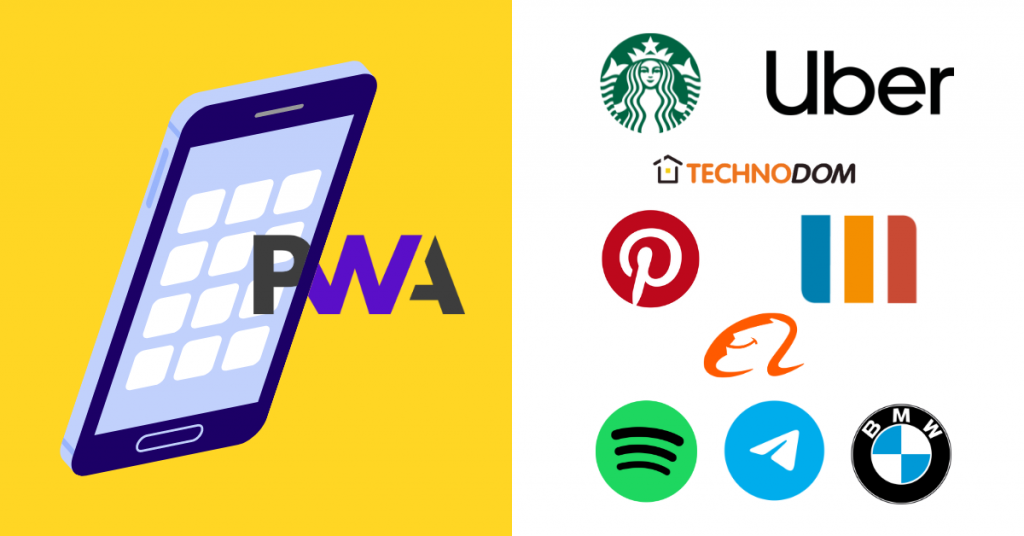
In the realm of examples of progressive web apps, a few shining examples stand out, demonstrating the potential of progressive web app technology to reshape the digital landscape. These PWAs, hailing from various industries, capitalize on the best aspects of web and native apps, providing a seamless user experience that marries:
- Speed
- Responsiveness
- Offline functionality
- Home-screen accessibility
Let’s explore some of these top-tier PWAs and see how they’ve leveraged PWA technology to augment their digital presence. From global coffeehouse giants to innovative music streaming services, these trailblazing PWAs exemplify the power of this technology to enhance user engagement and boost mobile web conversions.
Starbucks

The Starbucks PWA offers a robust digital experience that caters to both mobile and desktop users. This progressive web app is more than just a digitized menu. It’s a comprehensive platform where customers can explore the full range of Starbucks offerings, customize their orders, and even see store availability and delivery details—all in a smooth, intuitive interface.
But what truly distinguishes Starbucks’ PWA is its offline functionality. Even in the absence of service, customers can still browse the menu and add items to their cart. Once they’re back online, they can continue their order without interruption. This seamless offline functionality, coupled with faster loading speeds and an enhanced purchasing experience, has made Starbucks an excellent choice. PWA has a significant improvement over their previous mobile site.
Uber

Uber, the globally recognized ride-hailing service, has harnessed the power of PWAs to create an application that caters to users with diverse needs. Its PWA isn’t just a scaled-down version of its native app. It’s a reliable platform that offers a full suite of Uber services, from ride-hailing to food delivery and even bike and scooter rentals.
The real strength of Uber’s PWA lies in its adaptability. The PWA is designed to function effectively on slower networks and is optimized to accommodate low-end devices. This makes it an ideal solution for occasional users who don’t want to install the native app or those with limited device storage.

The popular social media platform Pinterest leveraged PWA technology to transform its mobile web experience. The Pinterest PWA delivers a fast, engaging, and app-like experience without the need for app installation.
One of the standout features of Pinterest’s PWA is its image lazy-loading functionality. This ensures faster loading times, allowing users to continue scrolling while images are rendered to full quality in the background. As a result, users spend more time on the site, boosting Pinterest’s revenue.
Trivago
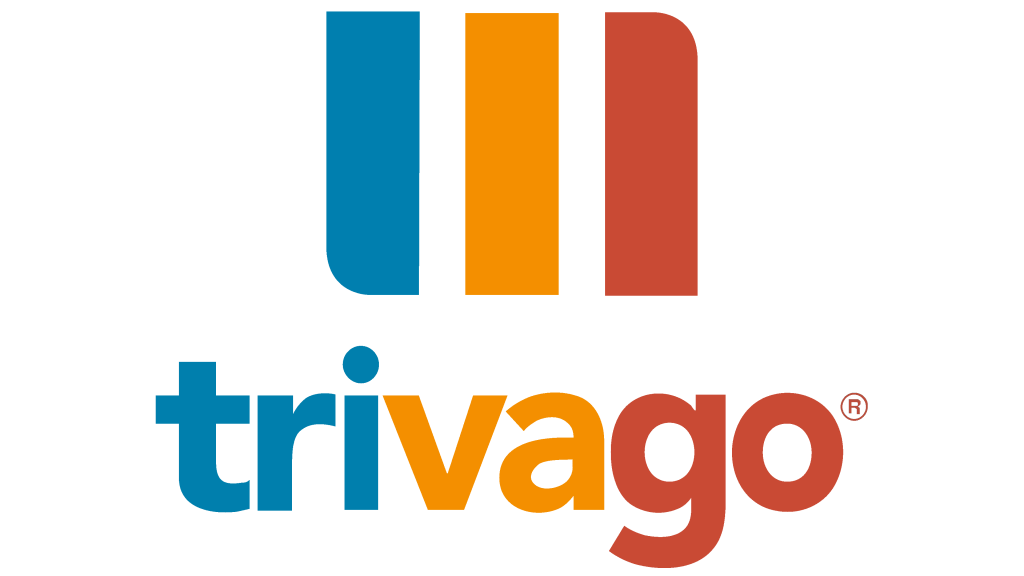
Trivago, a global hotel search platform, leveraged PWA technology to enhance user experience and boost conversions. Trivago’s PWA offers a fast, reliable, and offline-capable platform for hotel search and booking.
The implementation of the PWA was sequential, starting with offline functionality, followed by push notifications and an Add to home screen feature. As a result, Trivago saw a significant increase in user engagement and conversions.
Technodom

Technodom, the biggest household appliance and electronics retailer in Central Asia, re-platformed their eCommerce store to PWA to match their scale of operation and set the scene for future development. With 100k users, 500HB of media, and 60K+ active product items from over 700 world’s leading brands, Technodom originally became the biggest PWA store in the world.
Technodom’s PWA is a much more flexible, future-proof system designed with a mobile-first approach in mind and optimized for high performance.
Spotify

Spotify, the globally renowned music streaming service, leveraged PWA technology to create a lightweight, immersive, and personalized experience for its users. The Spotify PWA offers a full range of features, including curated playlists, personalized recommendations, and even an offline mode for premium users.
Despite being light on-device storage, the Spotify PWA doesn’t compromise the user experience. It provides an intuitive, responsive interface that rivals its native app counterpart. This and its personalized music discovery features have contributed to Spotify’s impressive conversion rates.
Telegram

Telegram, a secure messaging platform, turned to PWAs to enhance its mobile web presence. Telegram’s PWA offers a secure messaging platform, some offline capabilities, and a fast, user-friendly experience.
This PWA has been particularly beneficial for Telegram’s user base, which includes users with low-end devices and slow or intermittent internet connections. Despite these challenges, the Telegram PWA ensures a seamless, reliable user experience, boosting user engagement and satisfaction.
Alibaba

Alibaba.com, the world’s largest online B2B trading platform, looked at the mobile web as a platform to shift non-app users to the app, but many preferred to stay within a browser. They wanted to deliver a great user experience for first-time visitors in the hopes of re-engaging them and repeat visitors who are more loyal to the site.
As a result, they built a PWA that led to a fast, effective, and reliable mobile web experience. After upgrading their site to a PWA, they saw an increase in total conversions across browsers.
BMW

BMW, the luxury automobile giant, embraced PWA technology to create a rich, immersive digital experience for its customers. The BMW PWA offers a wealth of high-resolution videos and images, interactive features, and a seamless navigation experience that mirrors the company’s commitment to quality.
The PWA’s unique design and engaging content have increased consumer interest and mobile user engagement. The success of BMW’s PWA illustrates how a well-designed PWA can enhance a brand’s digital presence, engage customers, and drive conversions.
Best PWA solutions
While PWAs provide numerous benefits, developing a successful PWA may seem like a daunting task for many businesses. However, there are several advanced PWA solutions available that can help companies to build powerful, feature-rich PWAs with relative ease.
By leveraging these tools and frameworks, businesses can streamline the development process and create high-performing PWAs that deliver a seamless user experience.
These solutions are equipped with a variety of features that can enhance the performance, user experience, and overall effectiveness of a PWA. From support for hundreds of features to middleware-less designs, these solutions provide businesses with all the tools they need to create successful PWAs.
ScandiPWA

ScandiPWA is an open-source PWA solution for Magento (Adobe Commerce) stores. This solution supports over 350 Magento features, providing businesses with a comprehensive toolset to create a feature-rich PWA.
In addition to its extensive feature support, ScandiPWA offers the following:
- A middleware-less design
- Direct communication with the Magento (Adobe Commerce) backend
- Improved performance
- A more efficient user experience.
Vue Storefront

Vue Storefront is a highly customizable PWA solution for eCommerce platforms. It offers a headless architecture, which means it can be easily integrated with any eCommerce backend. This flexibility allows businesses to create a PWA that perfectly fits their needs.
Furthermore, Vue Storefront provides out-of-the-box integrations with over 30 eCommerce platforms, making it a convenient solution for businesses that want to start building their PWA without delay.
Magento PWA Studio

Magento PWA Studio is a comprehensive set of developer tools designed to facilitate the development, deployment, and maintenance of a PWA storefront on Magento 2.3 and above. It provides a robust foundation for businesses to create a PWA that can leverage the full capabilities of the Magento platform.
From Add-to-home-screen functionality to Magento 2 compatibility, Magento PWA Studio offers a wide range of features to help businesses build sophisticated Progressive Web Applications on top of their Magento 2 stores.
NexPWA

NexPWA is a flexible and modular PWA solution catering to various industries and platforms. Whether you’re running an e-commerce store, a blog, or a corporate website, NexPWA provides a range of features that can help boost conversions and enhance the customer experience.
Aside from its versatility, NexPWA offers the following benefits:
- User-friendly interface
- Quick implementation
- Swift launch of PWAs
- Wide range of features to increase conversions
- Enhanced customer experience
Benefits of Progressive Web Apps
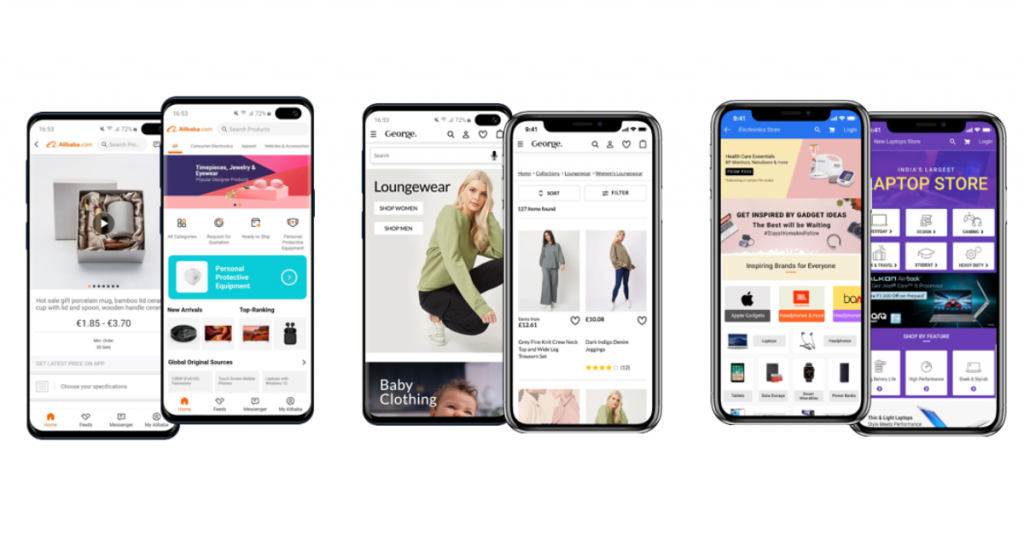
Progressive Web Apps offer numerous benefits, making them an attractive choice for businesses. These benefits stem from the unique capabilities of PWAs, which combine the best features of websites and native apps to deliver an enhanced user experience.
From improved performance to offline functionality, PWAs provide a range of advantages that can help businesses deliver a superior digital experience. Let’s delve deeper into these benefits and explore how they can enhance a business’s digital presence.
Enhanced user experience
One of the key advantages of PWAs is the enhanced user experience they provide. By leveraging modern web technologies, PWAs can deliver an app-like experience directly in the user’s browser. This includes features like push notifications, home screen installation, and full-screen mode, which were previously only available in native apps.
Furthermore, PWAs can provide a seamless user experience across all devices, whether a desktop, a laptop, a tablet, or a mobile phone. This ensures that users can access the same features and functionality regardless of the device they are using.
Faster loading times
Another significant benefit of PWAs is their ability to deliver faster loading times. Since PWAs are built using modern web technologies, they can leverage techniques like caching and lazy loading to improve their performance significantly.
Faster loading times not only enhance the user experience but also positively impact engagement and conversion rates.
- Users are more likely to engage with a website that loads quickly
- A fast, responsive site can significantly reduce bounce rates
- A fast, responsive site can increase conversions.
Offline functionality
Offline functionality is another crucial advantage of PWAs. Thanks to service workers, a type of web worker that operates in the background, PWAs can cache content and serve it even when the user is offline.
This means that users can continue to browse a PWA even when they lose their internet connection. Whether traveling in an area with poor network coverage or their device is in airplane mode, users can still access the content they need, providing a seamless user experience regardless of network conditions.
Increased mobile web conversions
PWAs can also help businesses increase their mobile web conversions. By providing a fast, reliable, and app-like experience, PWAs can encourage mobile users to spend more time on a website, leading to higher engagement and conversion rates.
Moreover, because PWAs can be installed directly on a user’s home screen, they provide a more convenient and accessible option compared to traditional websites. This increased visibility can lead to higher mobile web conversions, helping businesses improve their bottom line.
How to build a successful PWA
Building a successful PWA requires a comprehensive approach that covers everything from planning and strategy to design, development, and optimization. By following a well-defined process, businesses can ensure that their PWA meets their specific needs and provides an enhanced user experience.
In this section, we’ll walk you through the steps involved in building a successful PWA. Whether you’re a developer looking to build your first PWA or a business owner seeking to enhance your digital presence, these steps will provide you with a clear roadmap for creating a powerful PWA.
Planning and strategy
The first step in building a successful PWA is planning and strategy. This involves defining the goals and objectives for your PWA, identifying the target audience, and outlining the key features and functionality that your PWA will offer.
During this phase, it’s important to consider your business’s specific needs and how a PWA can help meet them. Whether you’re looking to improve user engagement, increase conversions, or enhance your mobile web presence, having a clear strategy in place will help guide the development process and ensure that your PWA aligns with your business objectives.
Design and user interface
Once you’ve defined your strategy, the next step is to design the user interface for your PWA. The design should focus on providing an engaging, intuitive, and user-friendly experience that mirrors the look and feel of a native app.
Whether you’re creating a simple one-page PWA or a complex e-commerce platform, the design should be responsive, ensuring that it looks great and functions well on all devices. It’s also important to consider the following aspects:
- Color scheme
- Typography
- Imagery
- Navigation
These elements can greatly influence the user experience.
Development and implementation
Once the design is finalized, the next step is developing and implementing your PWA. This involves writing the code for your PWA, integrating it with your backend systems, and testing it to ensure it works as expected.
During this phase, it’s important to consider the technical aspects of building a PWA, such as the use of service workers for offline functionality and caching strategies to improve loading times. Ensuring that your PWA is compatible with all browsers and devices is also crucial, as this can significantly impact the user experience.
Testing and optimization
The final step in building a successful PWA is testing and optimization. This involves:
- Testing your PWA on various devices and browsers
- Fixing any bugs or issues that are identified
- Optimizing it to improve performance and user experience.
Regular testing and optimization are crucial for maintaining the performance and reliability of your PWA. By continuously monitoring your PWA’s performance and making necessary adjustments, you can ensure that it continues to meet user expectations and deliver a high-quality experience.
PWA vs. Native Apps: which one is right for your business?
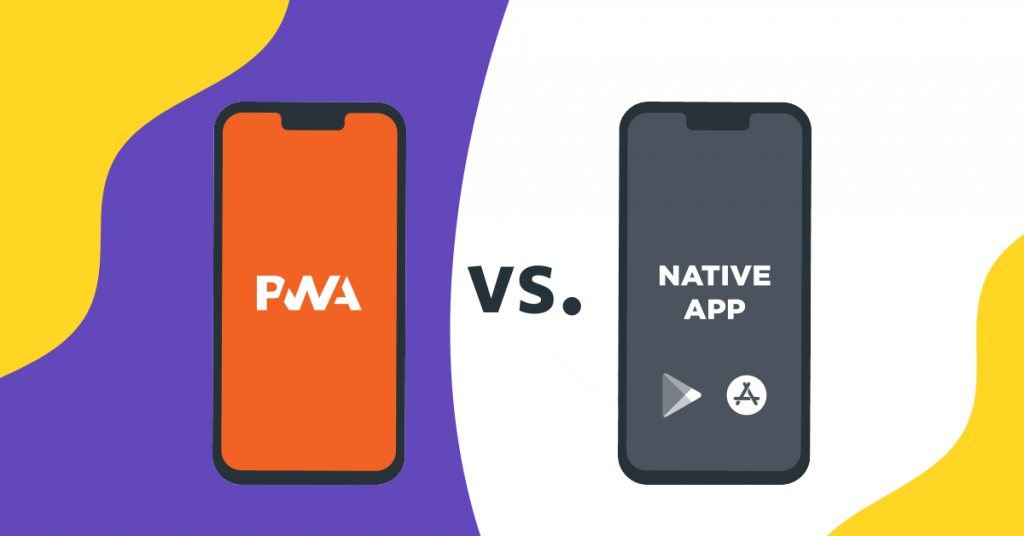
When it comes to choosing between a PWA and a native app, businesses often find themselves in a dilemma. Both options offer unique advantages and can be beneficial depending on the specific needs and objectives of the business.
In this section, we’ll explore the key differences between PWAs and native apps, discussing their respective advantages and drawbacks. This comparison will provide businesses with a better understanding of these technologies, helping them make an informed decision about which option is right for their needs.
Advantages of PWA
PWAs offer several advantages over traditional web apps and even native apps. One of the key advantages of PWAs is their ability to provide a fast, app-like experience directly in the user’s browser without requiring them to download and install an app.
In addition, PWAs are capable of working offline, thanks to service workers. This means that users can continue to use the PWA even when they lose internet connectivity, providing a more reliable and consistent user experience.
Advantages of Native Apps
While PWAs offer several benefits, native apps also have their own set of advantages. Some advantages of native apps include:
- Superior performance, as they are designed and optimized for a specific platform
- Access to device-specific features and capabilities
- Enhanced security and privacy measures
- Ability to work offline
- Seamless integration with other native apps on the device
In addition, native apps, including native mobile apps, have access to device capabilities, such as the camera, GPS, and accelerometer, which are not always available to web apps. This allows native mobile apps to provide a more immersive and feature-rich user experience, showcasing their native app features.
Choosing the right solution
Choosing between a PWA and a native app ultimately depends on your business’s specific needs and objectives. If you’re looking for a cost-effective solution that offers a fast, reliable, and app-like experience without the need for installation, a PWA might be the right choice for you.
On the other hand, if you need to leverage device-specific features or require a more immersive user experience, a native app might be a better fit for your mobile device. Ultimately, the best solution will depend on your specific needs, objectives, and resources.
Summary
In conclusion, Progressive Web Apps represent a significant advancement in web technology, providing an app-like experience directly through the browser. They combine the best features of web and native apps, offering faster loading times, offline functionality, and an enhanced user experience. Whether you’re a small business looking to improve your mobile web presence or a large enterprise seeking to boost user engagement, PWAs offer a cost-effective and efficient solution. As we’ve seen from the success stories of companies like Starbucks, Uber, and Pinterest, adopting a PWA can lead to increased conversions, higher user engagement, and improved business outcomes.
Want to learn how PWA can help your business? Reach out today, and we’ll get back to you with a strategy to help kick off your PWA journey!
Recognizing the huge potential of PWA technology in eCommerce early allowed scandiweb to begin crafting and building a PWA solution for Magento. In 2018, ScandiPWA was developed as the first ready-to-use PWA eCommerce solution for Magento-based stores. Today, it’s the fastest way to get ready-to-use PWA for any Magento store—development and production environments are available in 15 minutes.
Frequently Asked Questions
What is the best PWA?
The best PWA examples are Starbucks, Uber, Technodom, and Spotify, all of which boast impressive user experiences. Each has features like offline support, native device capabilities, and engaging UI/UX designs that optimize the mobile browsing experience.
Is PWA still relevant?
PWA is still relevant in 2023 and is supported by major browsers, making it a potential web application of the future.
Is Starbucks a PWA?
Starbucks provides a variety of features in their PWA, such as an ordering system, custom options, promotion, vivid product images, interactive animations, nearby store locating, gift cards, rewards, and offline mode.
Through this progressive web application, customers can place orders, browse the menu, and much more without needing to download a mobile app – and they are even able to access it when offline.
Is Pinterest a PWA?
Yes, Pinterest has been a PWA since July 2017, with the Pinterest Lite App being its Progressive Web App.
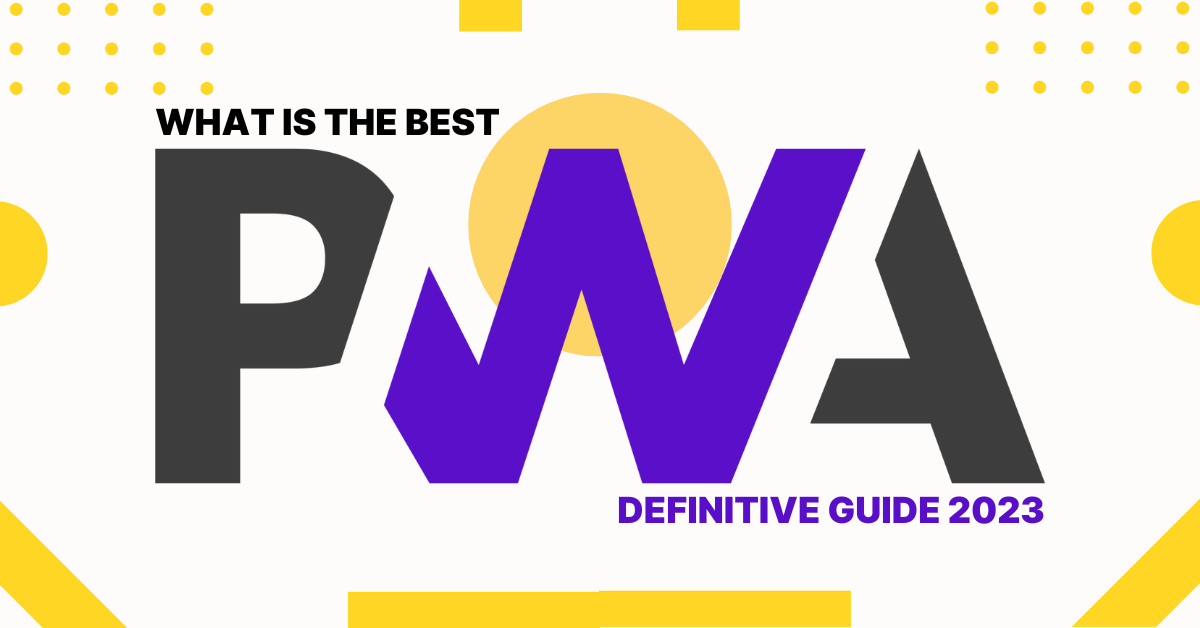

Share on: